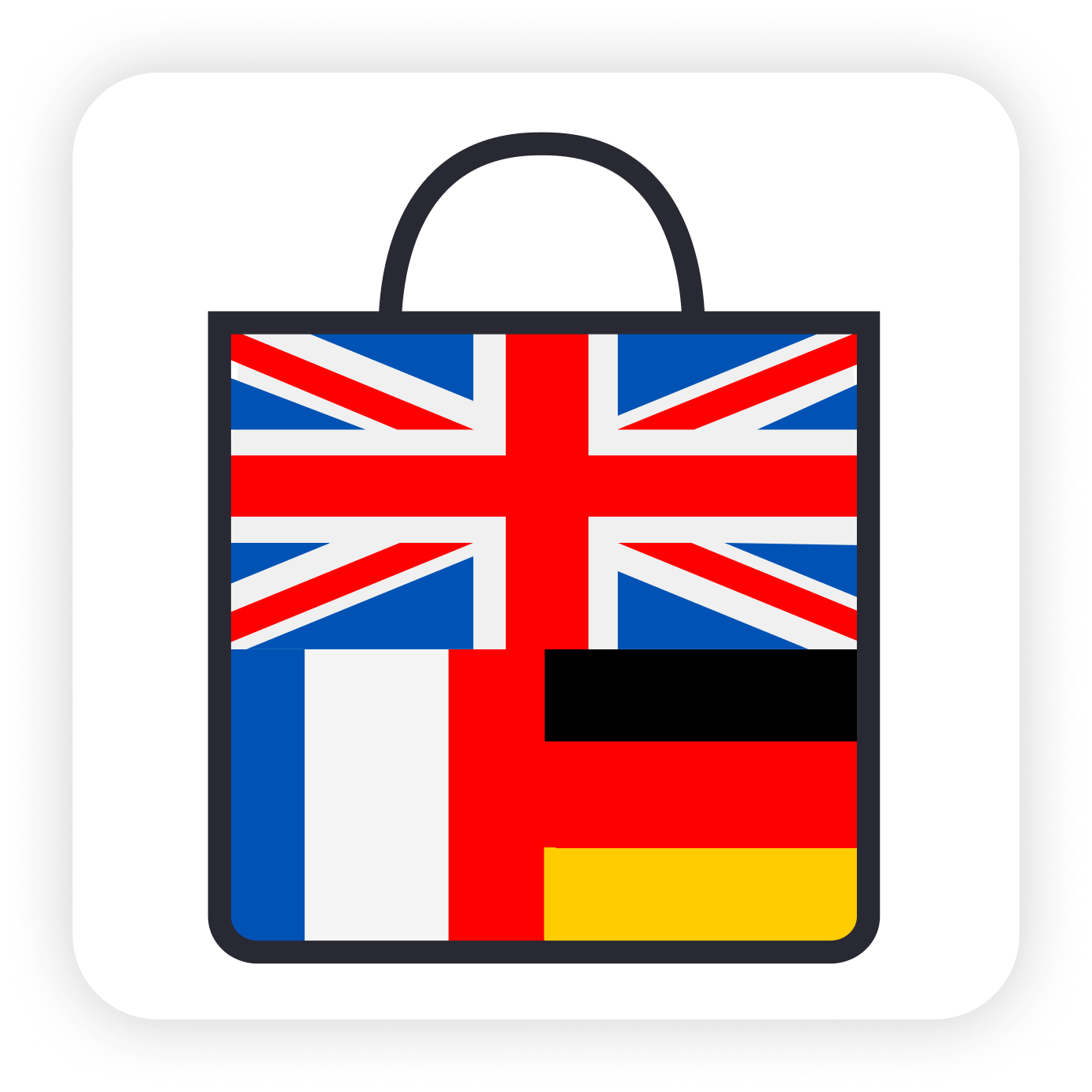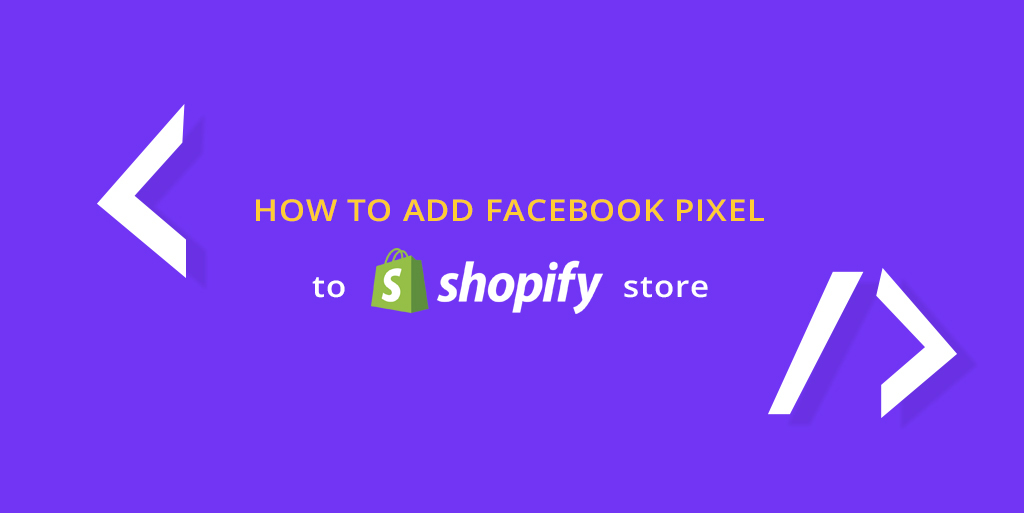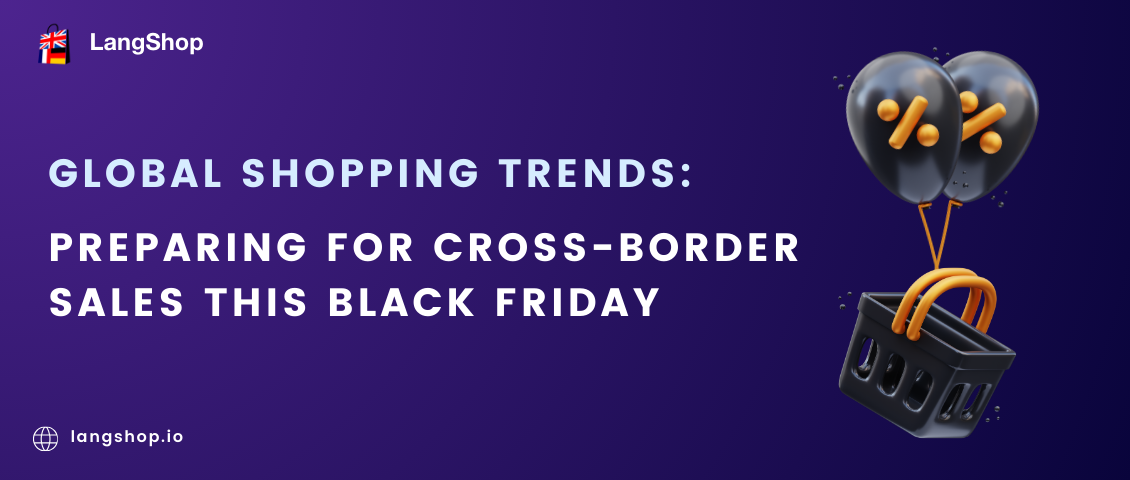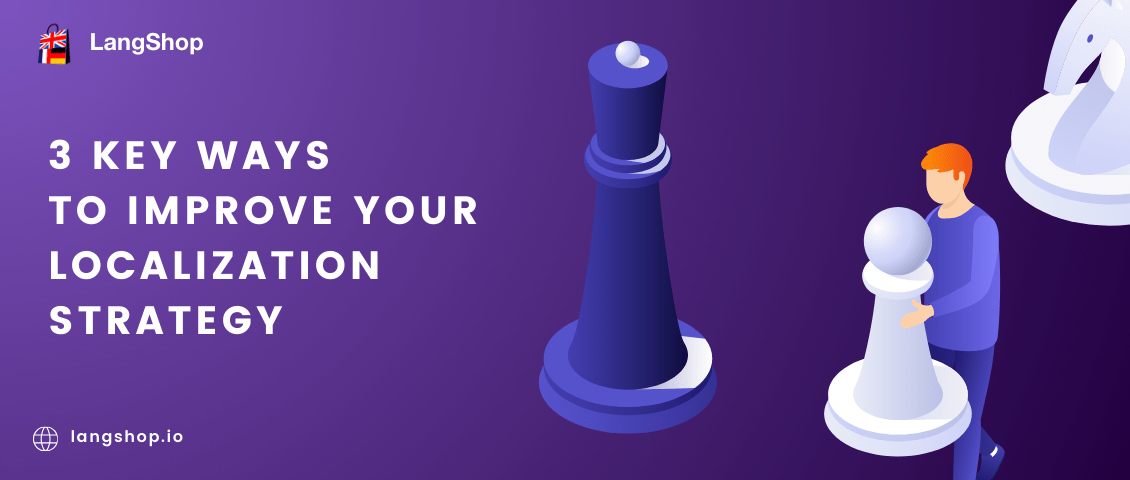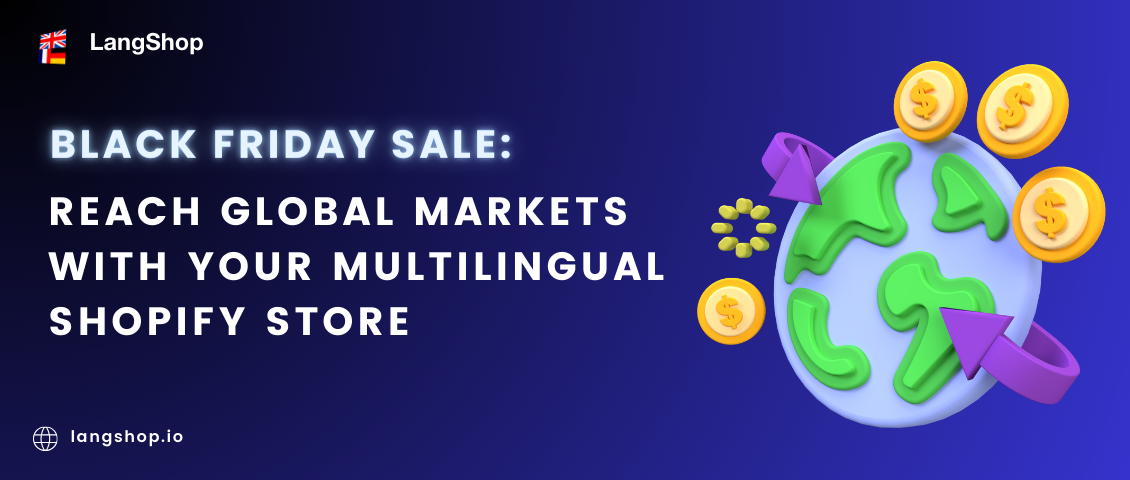When an online store is doing well with the present SEO strategy and your region is too small, it’s time to expand store in other countries. But how to promote the content of the store with search engines in regions where people speak the other language?
You need to improve SEO of your store. It will boost the access to stores and do search engines ranking higher. Langshop shares some key points on how to do multilingual SEO on your store.
What is a multilingual SEO?
SEO optimize the site to search queries. Multilingual SEO makes information on your site optimized for multiple languages. With this kind of search engine optimization your goods become worldwide searchable and foreigners can find your store. SEO might be quite complicated.
Imagine, you have an online shop and all content there is SEO-optimized to American English. That’s a fact that English is a modern international language, but Chinese and Spanish are popular too. Then you will find that not all customers have found your content from the USA even if this country was targeted in SEO.
One day you’ve decided to expand on the Swiss market because of purchasing power there. You need to adapt content for Swiss citizens and SEO. The biggest part of Swiss are German-speaking and the best decision would be to translate your content into German.
But what would you do with multilingual SEO for French- and Italian-speaking Swiss? They’re a third of the Swiss population. On which language version of the site would you direct them? And you need to direct your English-speaking customers on the English content of a multilingual site. What would you do with SEO?

Customers may use Google Translate or other services to interact with the content of the shop, but the best solution is to create your multilingual SEO strategy.
Why multilingual SEO is important?
When you want your store to be found by a search engine, you optimize your site for the language of your content. Whereas, for targeting several multilingual countries or regions you should take into account their differences. And if you think it’s a challenge for SEO — not really.
When we need to specify users by language thorough, we can target content to them more effectively and satisfy their needs. When you have a multilingual audience, with SEO you may expand the business and improve the ranking of your store in different countries and languages.
Let’s get back to our story with the multiple languages page of your Swiss shop. When you translate your original English content into German, SEO helps to find your goods and services to Austrians and Germans too. Unexpected visits are normal with strong search engine optimization.
Multilingual SEO is not as easy as it could seem: with the wrong implementation, there might be troubles with a ranking of a site. Algorithms of Google or Bing are able to deindex your content. Be sure you are able to do SEO correctly.
How to do multilingual SEO on your store?
OK, now you are ready to plan your multilingual SEO strategy. One of the main points is to match multilingual SEO with digital strategy. You should start with understanding the potential audience and habits of search in the targeted region. People who speak the same language might have different habits from country to country. This affects the content.
Choose a specific language and then you need to have a tool that deals with content translation. Langshop will help to deal with the multilingual SEO of the Shopify store. There are plenty of services and applications for other platforms, find the best for you.
Questions about the habits of potential audience
You need to answer them to understand the initial data for multilingual SEO.
- How your potential audience use social networks and how you may improve your SEO with this?
- What backlinks potential audiences use and how to start link building in this region with a different language?
- What search terms and content are popular in the audience and what new you might create to attract new users from foreign-language-speaking countries to store?
- Where the traffic is coming from now and how it relates to your targeted country in the context of SEO?
- How your goods and services meet the needs of your potential audience and are you able to optimize them for your search engine optimization?
- How potential audiences react to the currency of your store and should you adapt it for their language?
- Do you need a different domain name and how recognizable your brand is in a new country?
- How does the search engine result page look in different languages?
Content strategy
Content should be the basis of your multilingual SEO strategy. For a new market, you need to adapt it or write some new considering the needs of the potential audiences. Adaptation may be problematic for your multilingual SEO. We recommend starting your content strategy with the research of keywords common in the region and language you’ve chosen. It will be quite challenging because you need to discover your potential audience type of thinking: even if you speak one language, your needs and thoughts can be different. The same words can have several meanings in different cultures and countries. Thus, SEO may come to harm because of ignorance.

The correct translation is a difficult task too. Use language features to make your content attractive to potential audience and improve SEO. Take into account the cultural differences. The quality of translation should be high as the sky, thus, you need a native speaker translation. In Langshop we’ve got an option of multilingual Pro Translation, check how it works.
International site domain name
To target your potential audience in another country with SEO well, you should land it on a page with a dedicated URL. Why it’s important? Without a dedicated URL you can have a problem of duplicate content: the search engine will penalize your site with lower-ranking or deindexing. What are the consequences for SEO? Duplicate content can ruin all your business expansion.
The way to avoid penalties is dedicated URL with language indicator. If your store address is www.yourstore.com, variant for Switzerland will be www.yourstore.com/ch or www.swiss.yourstore.com.
The place of language indicator depends on domain structure. There are three variants of domain structure with their pros and cons.
Top-level domain (www.yourstore.ch)
The top-level domain is recommended to use for localization by country.
Pros:
- You are able to connect Google’s Search Console for geotargeting;
- It doesn’t matter where your server is located;
- You can run some sites in the same language without penalties of duplicate content
Cons:
- The process of buying might be long and expensive;
- Users should log in each version of the site because cookies can’t be shared between different locales;
- Top-level domains not always match the language code and audience may be embarrassed. We recommend do not use TLD for localization by language.
Subdomain (www.ch.yourstore.com)
Subdomain is cheaper variant in contradiction to top-level domain. You can use a subdomain for locales if you’ve already bought a single domain.
Pros:
- You can use subdomain for localization by language or by country
- The setting of subdomain is pretty convenient for SEO and also you can connect it to Google’s Search Console;
- If DNS is pointed to the nearly localized server user can localize a hosting;
- Cookies can be shared between different locales and users don’t need to log in every time they switch a language.
Cons:
- Users cannot localize the domain name itself;
- Users might don’t identify domain name as locale.
Subdirectory (www.yourstore.com/ch)
Subdirectory is the third variant of useful for SEO domain name structure. The difference between subdomain and subdirectory is that the last one has one domain name system entry. Therefore, there is a prohibition to the host site in multiple regions for several locales.
Hreflang tags for your multilingual SEO
Hreflang attributes on a multilingual site help search engine to find what’s the language of the content on page and what country is it targeting. You can paste hreflang tags in the header of your page or use a sitemap to submit them. It’s will help your SEO work effectively.
When you use several language versions of URL, each language page should identify all language versions you have. You can face a problem when a few URLs are targeted on the audience who speak one language, but live in different countries. It will be great to set a general URL for geographically neutral users. If you have separate French versions for France, Belgium, and Switzerland, just make one more for other French-speaking audience.
One page — one language
You could think you may translate only a few parts of the multilingual site and keep other parts without changes. It might harm SEO, but could be profitable in these cases:
- user-generated content (such as comments) can be not in the main language of your site;
- you’ve kept navigation text without changes.
In these cases, you can clarify the intended country and language with hreflang tags.
But you can have troubles with user experience using multiple languages on your website. In the first case your multilingual audience may lose the context of discussion; it can be even distressing for somebody. In the second one SEO isn’t harmed, but the navigation on your website might be problematic for users.
Multiple languages on a single page might be useful for an audience when it’s a side-by-side translation on dictionaries or language-learning websites. If a side-by-side translation is important for your store just use hreflang tags. Try to use multiple languages page for the store.
It’s time to expand your business
Understand the habits of your potential auditory, plan your content strategy, be careful with translation, consider the type of domain structure, and don’t forget about hreflang tags. We believe these multilingual SEO tricks and tips will help you to make your store successful on a new market.
